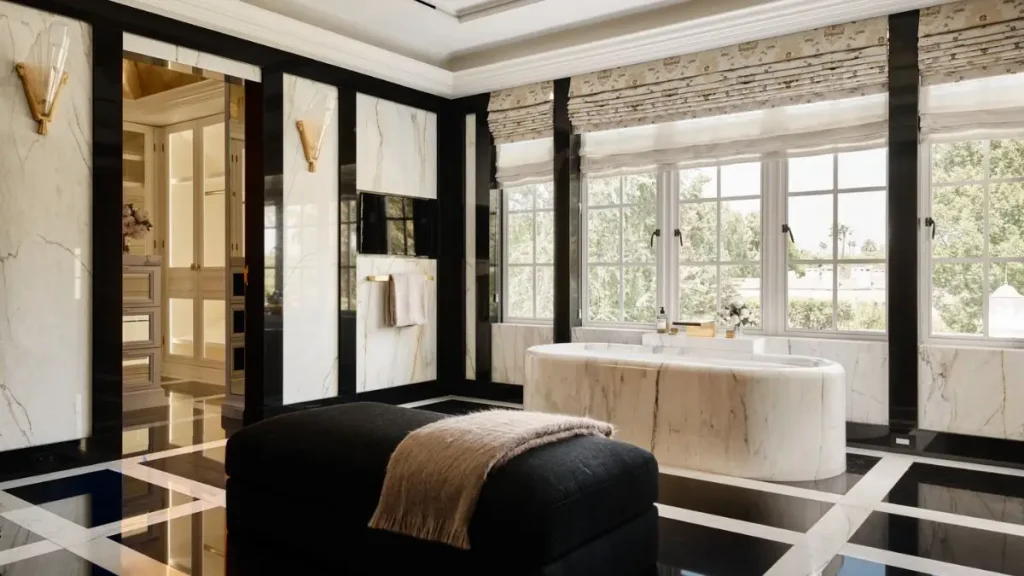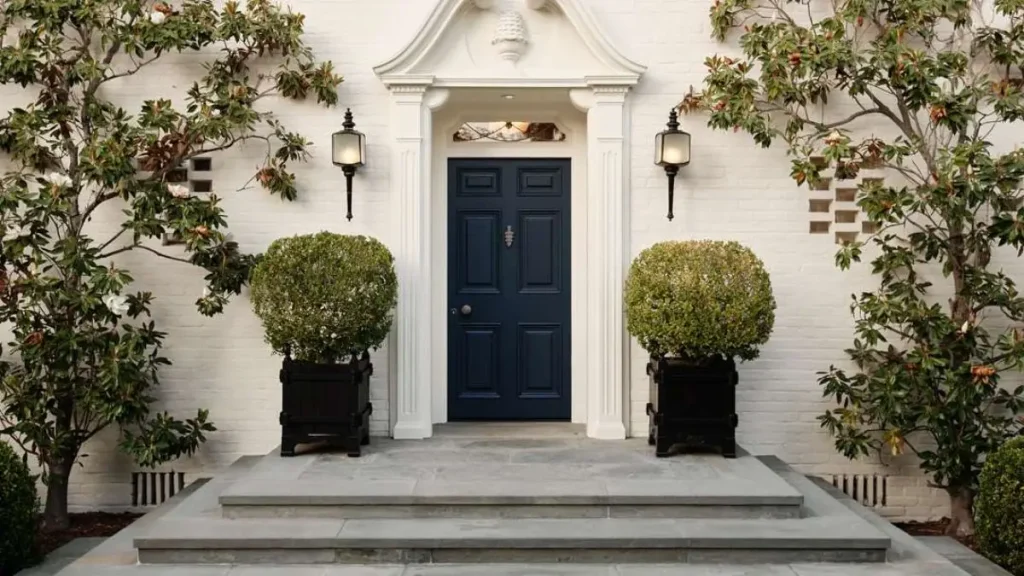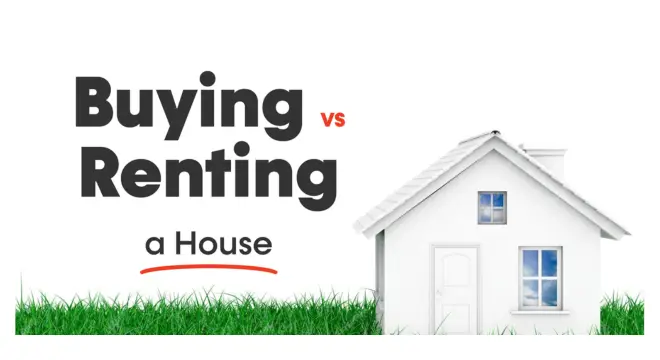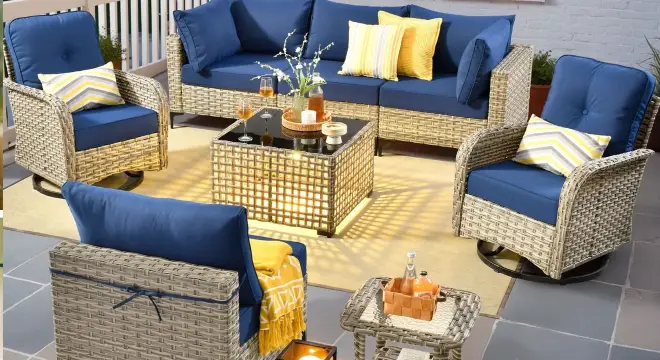Ann Rutherford’s Former Residence With Library, Billiards Room Hits Beverly Hills Market at $42M
There’s something different about this one.
When I first saw that Ann Rutherford’s old Beverly Hills estate just hit the market for $42 million, I paused. Not because it’s a fancy listing — LA has plenty of those. But because this home isn’t just square footage and swimming pools. It’s a living time capsule.
Ann Rutherford wasn’t just a supporting actress in Gone With the Wind. She was part of that golden era of Hollywood that built Beverly Hills into what it is today. And the house? It’s not just a backdrop — it lived that history with her.
We’re talking about a 1930s French Revival estate designed by Paul R. Williams, the same architect who built homes for Frank Sinatra and Lucille Ball. It’s not just valuable — it’s irreplaceable. The kind of place that still holds echoes of black-tie parties, star-studded weddings, and quiet mornings that shaped the old Hollywood rhythm.
Listings like this aren’t about granite countertops or garden views. They’re about legacy. And this one — nicknamed “Greenway Chapel” by Rutherford herself — carries more than most.
The Woman Behind the Mansion — Who Was Ann Rutherford?
If you’ve ever watched Gone With the Wind, you might remember Carreen O’Hara — Scarlett’s sweet younger sister. That was Ann Rutherford. But her legacy goes beyond just one iconic film. She was a working actress through the 1930s and ’40s, with a massive following back in the day.
She also starred in the Andy Hardy film series alongside Mickey Rooney — which, believe it or not, was one of MGM’s biggest franchises at the time. Ann had range, charisma, and that rare old-school star energy. She knew how to steal scenes, but she never needed the spotlight to prove anything.
Her husband, William Dozier, was a big deal too — the producer behind the 1960s Batman and The Green Hornet TV shows. So, when I look at this estate, I don’t just see celebrity — I see two creators who helped shape American pop culture from their living room.
Knowing who lived here adds weight. This wasn’t just a property — it was a place where real moments happened. And that matters.
A Home With a Story — Designed by Paul R. Williams
I’ve covered enough luxury listings to know when architecture becomes part of the soul of a house. This one? It was designed by Paul R. Williams — and that changes everything.
Williams wasn’t just a talented architect. He was the first Black member of the American Institute of Architects, and he went on to design homes for Hollywood legends like Frank Sinatra, Lucille Ball, and Barbara Stanwyck. His work shaped Beverly Hills as much as the stars who lived there.
When you walk through a Paul R. Williams home, it’s not about flashy gimmicks or over-the-top features. It’s about elegance, balance, and quiet confidence. This 1938 design — now known as Rutherford House — is one of his classics. French Revival style, curved lines, detailed flourishes that hold up nearly a century later.
It’s not just beautiful — it’s rare. And in a market full of tear-downs and modern boxes, that rarity holds real weight.
It reminded me of Richard Tyler’s Tuscan-style Pasadena villa — both outdoor spaces offer a kind of refined seclusion that doesn’t scream for attention, but earns it anyway.
Inside the Rutherford House — Classic Glamour Meets Modern Luxury

Let me walk you through it — because this place isn’t just historic, it’s deeply livable too.
The front entry hits you first: a wide, sweeping staircase paired with herringbone-patterned wood floors. No flashy materials. Just timeless design done right. Floor-to-ceiling windows let natural light pour in, especially in the formal dining room, which looks out onto lush gardens you’ll probably never want to leave.
There’s a marble-countertop bar tucked inside wood-paneled walls — the kind of space that begs for jazz and whiskey, not Instagram selfies. Next door, a library and billiards room carry bold Art Deco influence, inspired by legendary designer Émile-Jacques Ruhlmann. It’s heavy with character — in the best way.
You can tell this home was built for hosting. For long conversations. For people who didn’t just pass through LA — they built it.
Fox Business called the home “a one-of-a-kind residence that blends old Hollywood with modern luxury.” I don’t say this often, but they nailed it.
It’s the kind of place that begs for jazz and whiskey, not Instagram selfies. What kind of vibe would you create here? Tell me in the comments — would you keep it classic or put a modern spin on it?
Kitchen and Bedrooms — Designed to Be Lived In
Let’s talk about the spaces where you’d actually live day-to-day — because here’s where it gets interesting.
The kitchen doesn’t scream “renovated.” It respects the home’s history while giving you everything you’d want: white-painted wood cabinets, a black-and-white checkered floor, stainless steel appliances, and a mosaic-tiled ceiling that feels more Paris than Los Angeles. There’s also a breakfast nook with floor-to-ceiling windows, so even your morning coffee feels cinematic.
Upstairs, the primary suite is a retreat. You get two full marble bathrooms, dual walk-in closets, and a separate lounge that overlooks the garden. It’s quiet luxury — the kind that doesn’t need to flex.
Crazy Luxury Homes described it perfectly: “Old-world elegance paired with modern functionality.” That’s exactly what it feels like. You don’t need to be a celebrity to appreciate it — you just need to love detail, calm, and rooms that make you breathe a little deeper.
And a separate lounge that overlooks the garden. It’s quiet luxury — the kind that doesn’t need to flex. I came across a short WhatsApp thread recently where people were actually debating whether modern kitchens should borrow this exact kind of European subtlety — and this one nails it.
Outdoor Grandeur — Where the House Really Opens Up
Out back, the vibe shifts. It’s more relaxed, more open — but still unmistakably refined.
You’ve got a perfectly oval-shaped pool framed by manicured landscaping, a back pavilion for gatherings, and a separate pool house with its own outdoor bar and spa setup. It’s not oversized or overdone — just polished and purposeful.
This isn’t the kind of outdoor space you throw together for showings. It feels like it’s been lived in. Celebrated. Remembered.
Whether you’re thinking about hosting a big event, quiet Sundays with family, or just floating in silence while the city buzzes outside your gates — this backyard is built for it.
And here’s the part that surprised me: it still feels private. Even in Beverly Hills, that’s not a given.
Just like Elan Zafir’s charming NYC apartment, this home holds quiet stories in every corner — reminding us that location means nothing without memory.
From ‘Greenway Chapel’ to Star-Studded Wedding Spot
One of the most interesting things I discovered about this home? It wasn’t just a place to live — it was a venue. Ann Rutherford and William Dozier actually hosted multiple celebrity weddings right here, and they even gave the house its nickname: Greenway Chapel.
Imagine that for a second — your backyard being used for star-studded ceremonies during the golden age of Hollywood. Guests in tuxedos, string quartets echoing through the garden, the scent of champagne and orange blossoms in the air. This wasn’t just a house. It was a cultural hub.
Most listings don’t come with a nickname, let alone a reputation. But this one does. And if you’re the kind of person who sees a home as more than just property, you’ll get why that matters.
You’re not just buying a building. You’re inheriting a legacy that meant something to people long before Zillow ever existed.
The Price Journey — From $27.6M in 2018 to $42M Today

Now let’s talk about the money.
According to the NY Post, this home was last sold in 2018 for $27.625 million. And here we are, in 2025, looking at a new asking price of $42 million.
That’s a $14.3 million jump in just seven years — which might sound crazy at first glance. But here’s the thing: homes like this don’t hit the market often. And when they do, they’re not valued by square footage. They’re valued by narrative, rarity, and architectural weight.
Also, Beverly Hills isn’t exactly short on buyers willing to pay for distinction. The market’s shifted, sure, but properties with deep cultural roots — especially ones designed by someone like Paul R. Williams — tend to hold value better than modern builds with no soul.
If you’re thinking about it from an investment lens, this home’s trajectory tells you one thing: it’s not just surviving trends. It’s moving with purpose.
While some modern homes like Pat Perez’s Arizona estate built for sneaker culture make bold statements, Rutherford House leans into timeless charm and detail.
Who Might Buy This Home — And Why It Still Matters?
I’ve been asking myself this: who’s the right buyer for Rutherford House?
It’s probably not the average celebrity looking for a flashy escape. This home feels more personal. More intentional.
Maybe it’s someone who’s obsessed with classic architecture. Or someone who respects Paul R. Williams’ legacy and wants to preserve it. Or maybe it’s a high-net-worth individual who’s done chasing new and wants something timeless — a home that tells a story from the moment you pull into the driveway.
It could also be a brand. A studio. Even a foundation that wants a space with cultural weight. This place has that quiet magnetism you don’t find in spec builds.
And if you’re reading this thinking, “Maybe me?” — you’re probably the kind of person who would do it justice.
Owning a Legacy — Preservation, Status & Cultural Significance
If you’re thinking about buying a house like this, let me say this straight: you’re not just buying real estate. You’re becoming part of its story.
Homes designed by Paul R. Williams aren’t just appreciated — they’re studied. They’re protected. Some even end up on historical registers. And owning one comes with a certain responsibility to respect what came before.
But here’s the flip side: it’s also deeply rewarding. You get to live inside a piece of architectural history, to wake up every day in a place that’s already left a mark on the world. That’s not something you get with a new build in the hills.
If you care about legacy — if you believe homes can be more than assets — this is the kind of place you protect, not flip.
Final Thoughts
In a city full of attention-grabbing properties, Ann Rutherford’s Beverly Hills estate stands apart. It doesn’t just carry price—it carries memory. From its Paul R. Williams design to the Hollywood history etched into its walls, this isn’t just real estate—it’s a rare moment frozen in time.
If you had the keys, would you preserve it exactly as it is—or put your own legacy into it?
Love stories like this? Visit our Real Estate & Homeownership for more celebrity home insights — where legacy meets luxury, and real estate becomes personal.
Disclaimer: This article is for informational purposes only and does not constitute financial, legal, or real estate advice. All property details and prices are accurate as of the publication date but may be subject to change. Sources include public listings, news reports, and third-party real estate platforms.


